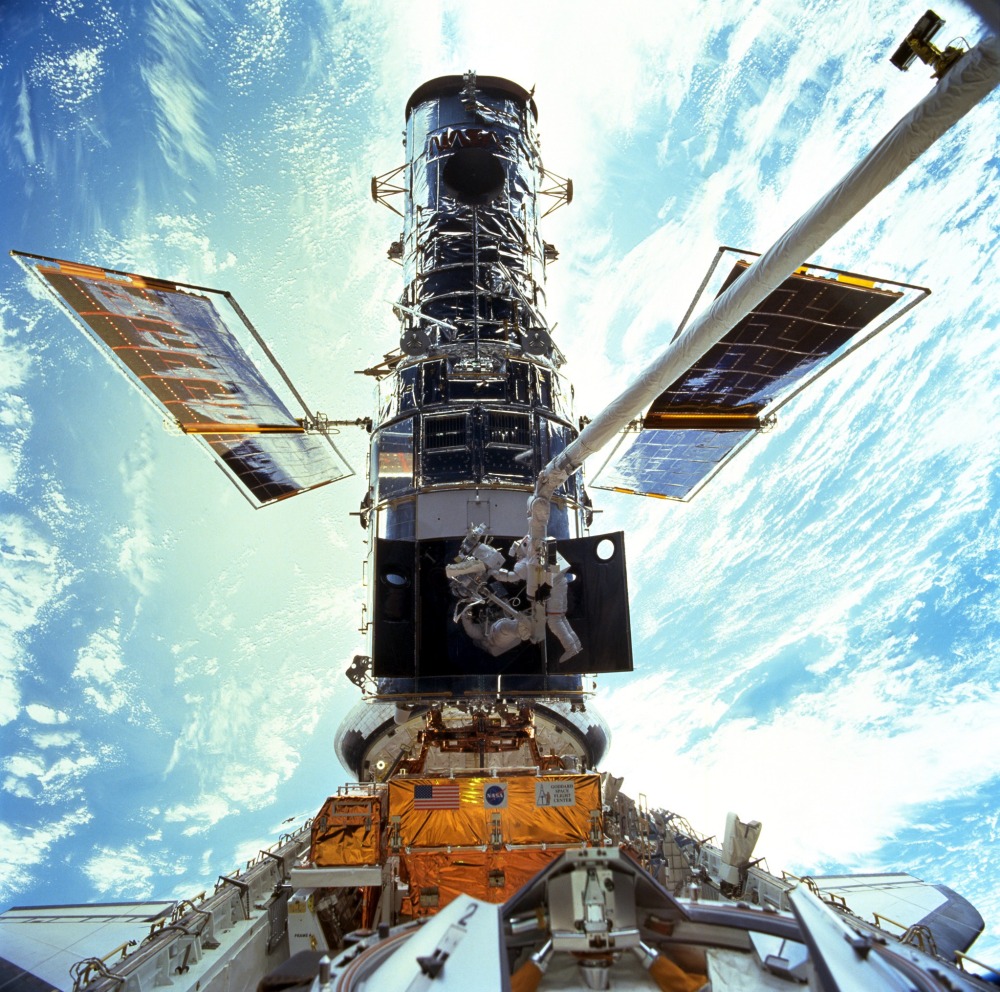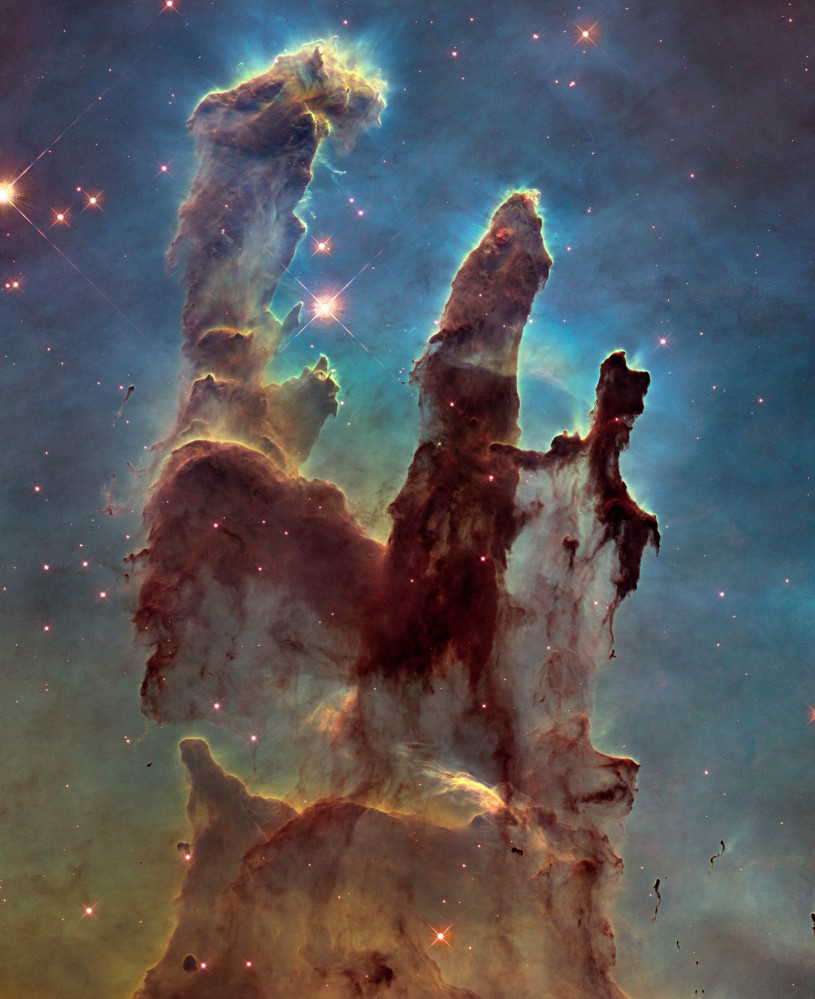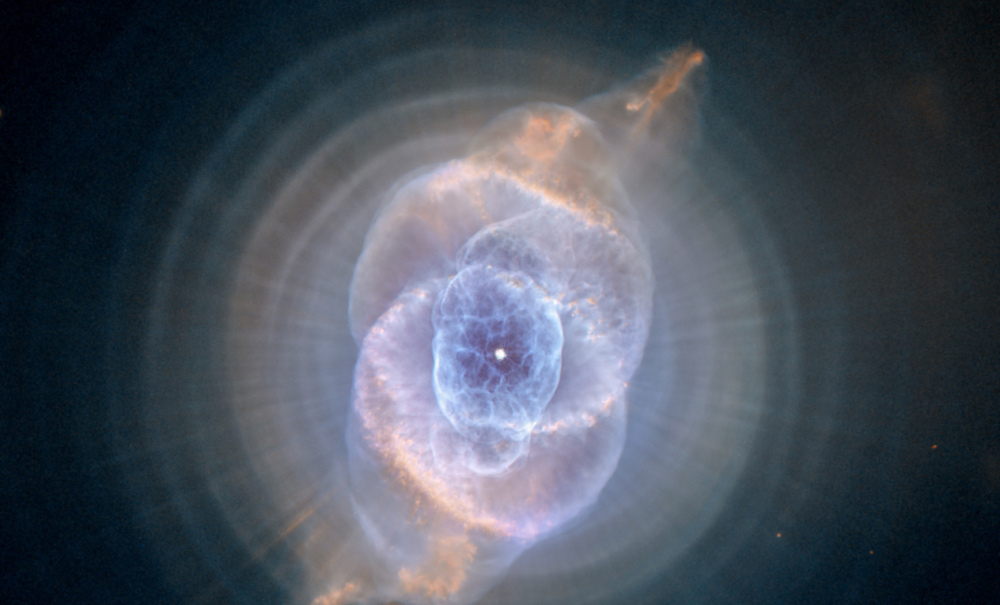CAPE CANAVERAL, Fla. — One of NASA’s crowning glories, the Hubble Space Telescope, turns 25 years old this week.
With 1 million-plus observations, including those of some of the farthest and oldest galaxies ever beheld by humanity, no man-made satellite has touched as many minds or hearts as Hubble.
NASA is celebrating Friday’s anniversary with ceremonies this week at the Smithsonian Institution and Newseum in Washington.
“Hubble has become part of our culture – very much,” said NASA’s science mission chief John Grunsfeld, a former astronaut who flew on the final three Hubble repair missions.
A look at Hubble’s quarter-century in orbit about 350 miles above Earth:
A full decade in the making, Hubble rocketed into orbit on April 24, 1990, aboard space shuttle Discovery. NASA wanted an observatory free of the atmosphere’s distortion and, in some cases, absorption of light. The telescope was named for American astronomer Edwin Hubble, who in the 1920s determined that the universe is expanding.
Sky-high excitement turned into bottomless agony when it quickly became apparent that the telescope’s primary mirror had been botched during manufacturing, resulting in blurry eyesight. Three years later, with NASA’s reputation and entire future on the line, a team of astronauts managed to restore Hubble’s promised vision with replacement parts.
Shuttle astronauts visited Hubble five times, from 1993 to 2009, to make improvements and repairs to the 43-foot-long observatory, about the size of a school bus. By the time Atlantis blasted off on the last servicing mission, NASA put the investment in Hubble at $10 billion.
The most distant objects spotted by Hubble – primitive galaxies – are some 13 billion light-years away and date to within 400 million or so years of the universe’s origin, known as the Big Bang.
Early on, Hubble proved the existence of super-massive black holes – and found they’re located at the center of most galaxies.
It also helped to pinpoint the age of the universe at 13.8 billion years old, by determining the current rate of expansion of the universe with an uncertainty of just 3 percent, according to the Mario Livio, an astrophysicist at the Space Telescope Science Institute in Baltimore. Thanks to Hubble, Livio said, astronomers know that cosmic expansion is accelerating because of mysterious dark energy.
NASA’s Grunsfeld said “there’s pretty high probability” that Hubble will keep working until at least 2020. Gravity is slowly lowering the telescope’s orbit, but low solar activity is keeping the atmosphere thinner, which could help keep Hubble up until the 2030s.
Send questions/comments to the editors.





Success. Please wait for the page to reload. If the page does not reload within 5 seconds, please refresh the page.
Enter your email and password to access comments.
Hi, to comment on stories you must . This profile is in addition to your subscription and website login.
Already have a commenting profile? .
Invalid username/password.
Please check your email to confirm and complete your registration.
Only subscribers are eligible to post comments. Please subscribe or login first for digital access. Here’s why.
Use the form below to reset your password. When you've submitted your account email, we will send an email with a reset code.